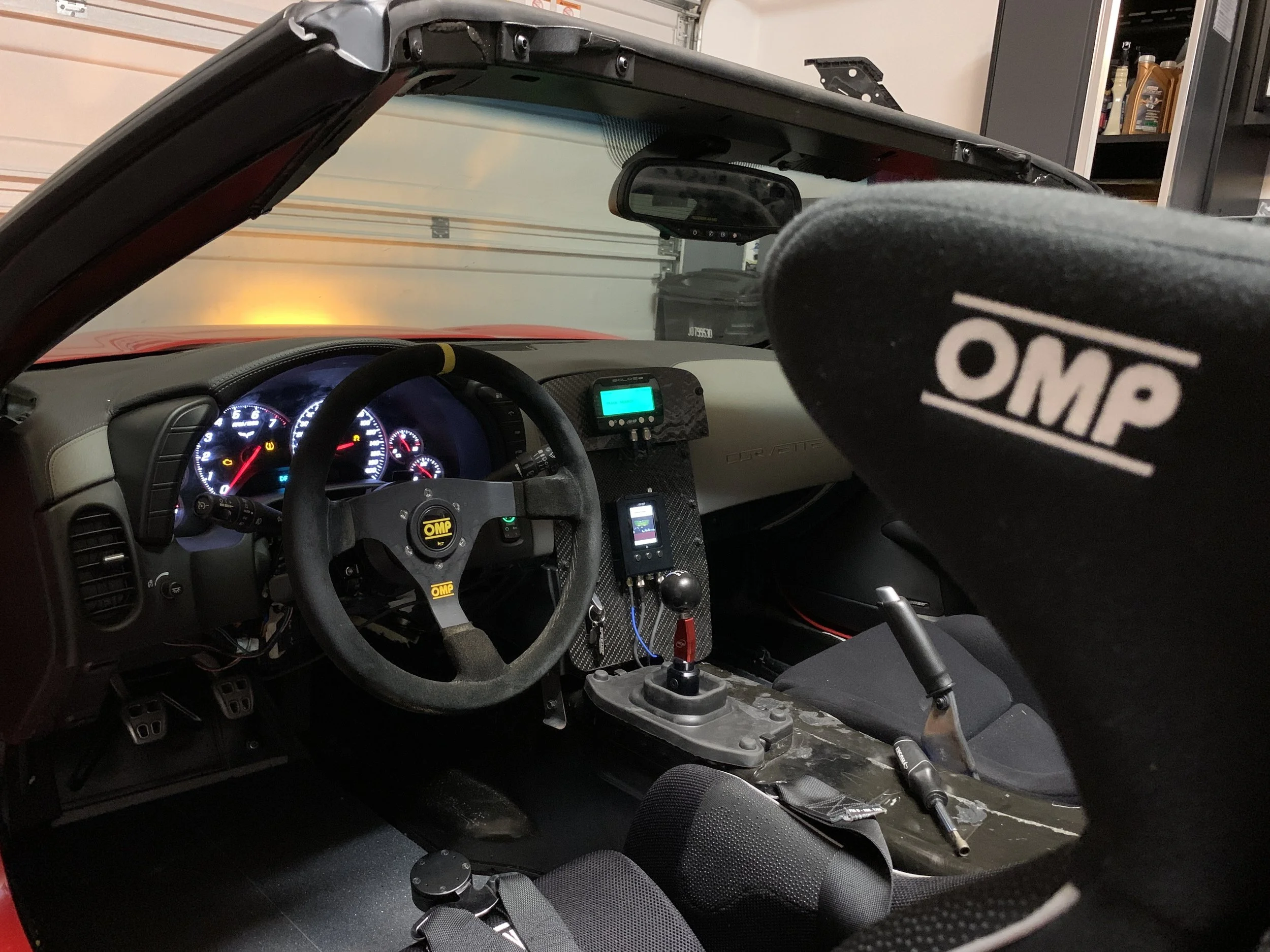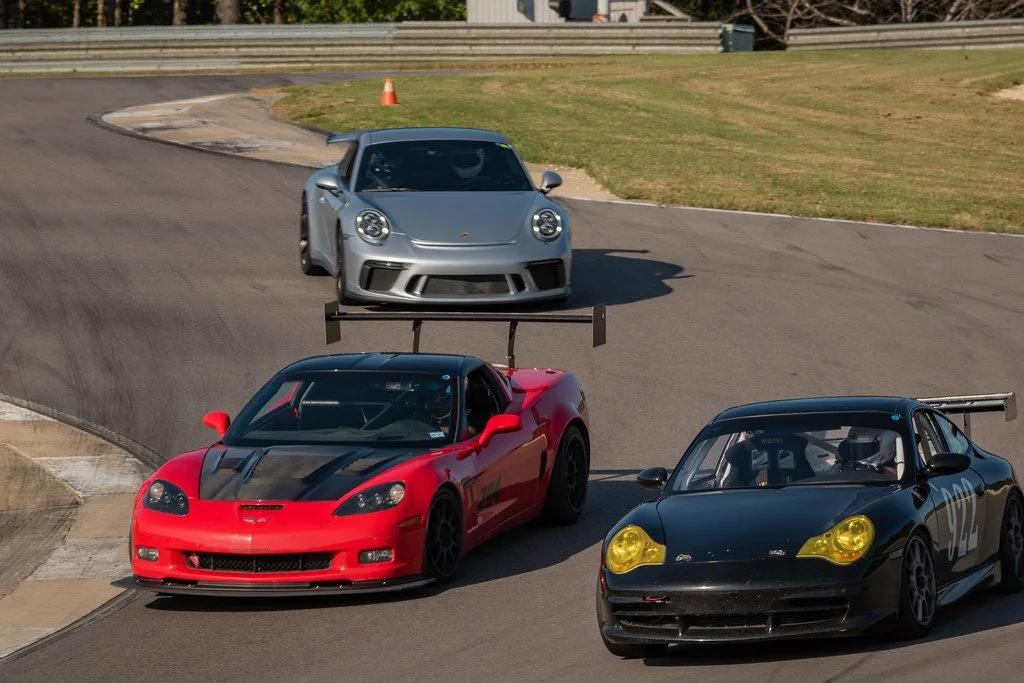Steven's C6 Grand Sport: Taking the Middle Path
Do your homework, take a strong platform with low running costs, and make the necessary modifications to make it truly sticky and powerful. That’s a good recipe for long-term trackday satisfaction. There’s cheaper and more expensive ways to go about this goofy game, but finding that comfortable middleground between sluggish stock and overpriced premium seems to be the way to stick with a car long-term and get really good at driving it. That’s what Steven Kronemberger’s done. Though he’s had Civic Type R and a 911 GT3 that’s more Cup Car than street car, he finds this Grand Sport provides the most thrills and the least headache.
Like Will Kwok, Kronemberger’s recognized the limitations of the CTR, namely its cooling issues. The Porsche was more resilient, but it wasn’t so cheap to buy or maintain. Not that the Corvette’s much cheaper, but being a domestic with a very popular engine, it’s got a way of keeping the overall costs low, even if it’s relatively heavy and powerful. Because it’s easier to get into, and because it doesn’t break too often, the C6 platform doesn’t put quite the same dent in the wallet as the 911.
In stockism trim, it was truly quick. Kronember avoided the more obvious Z06 because of concerns regarding the LS7’s head. The Grand Sport had the wider haunches, suspension, and brakes with a very reliable LS3—which could easily make Z06 power with a few modifications.
But for the first year, the LS3 stayed stock. All Kronemberger added was Recaro Pole Position seats, a set of LG Motorsports non-adjustable coilovers, a Vetteworks Shark harness bar, Hawk DTC-70s, and Nitto NT01s. With only those, it could run with dedicated time attack cars.
Starting at the mid-range version of the Corvette makes this possible. It does come with 275/325-section tires that house six- and four-piston calipers, respectively. The OEM 355mm and 340mm rotors (later replaced with Girodiscs) made it easy getting this 3,300-pound car stopped.
Add about 430 horsepower and you’ve got a fast car with a nice balance of strengths and few shortcomings. Combined with Kronemberger’s exuberant driving style, the lap times came quickly—as did a growing fanbase.
When it came time to leave California for Texas, he realized he’d been helped somewhat by the shorter nature of tracks around his former home. His first few outings at COTA were, well, if not humiliating, a simple reminder that everything’s bigger in Texas. So, while pulling the engine to fix the rear main seal, Steven seized the opportunity to fit a hot cam and a set of headers. Maybe then those 911s wouldn’t keep pulling him down straights.
All that was needed was a Texas Speed Cam (299/244), a set of ARH long tube headers, some porting of the factory heads, and an E85 tune by Peitz Performance. When done, they’d made 485 horsepower at the wheels on a Mustang Dyno and 525 horsepower on a Dynojet. Whichever number you prefer doesn’t matter; it was fast enough for big tracks—on the straighter sections, anyways.
But more cornering force was needed for the elusive lap times. It starts with support—and an OMP HTC-R with a halo offered that. Then came a Nine Lives wing flanked by massive endplates. For a nice aero balance, he fitted the front with a GSpeed splitter and AJ Hartman canards.
Photo credit: David T. Gillen
The stability that came was reassuring in the faster stuff, but the slow-speed understeer plagued him. True, he could neutralize things with a prod of the throttle, but it was slow. So with more 18-inch CCW wheels wrapped in 315 and 335-section tires, plus an AMT camber kit to get the footprint a little more consistent, he had more of the pointiness which made the stock car so satisfying to drive.
He was fine-tuning at this stage, and if he was willing and able to go this far, he couldn’t argue against making the last necessary alterations. Thankfully, there weren’t many, but those last ones weren’t cheap. A set of MCS two-way coilovers with remote reservoirs, GSpeed spherical bearings, solid engine and transmission mounts, and AFE PFADT sway bars made it not only quick and composed, but encouraging, too. The whole package was virtually there.
Even with significant weight reduction, a 3,050-pound car that suddenly gets going a lot quicker will need a little improvement in the braking department. The current creme de la creme, the StopTech Trophy kit, made this last step simple. The front 380mm rotors and six-piston calipers still handle the brunt of braking, but the rear 355mm rotors and four-piston calipers aren’t just along for the ride. If there was any lack of control during turn in and brake release, there isn’t anymore.
This newfound modulation helps him straighten the car much sooner, and with a car this powerful, to be able to get on the power early without spinning the wheels is a massive benefit. In fact, his driving tends to prioritize the clean corner exit. There’s not much chance to catch a PDK-equipped GT3 otherwise.






